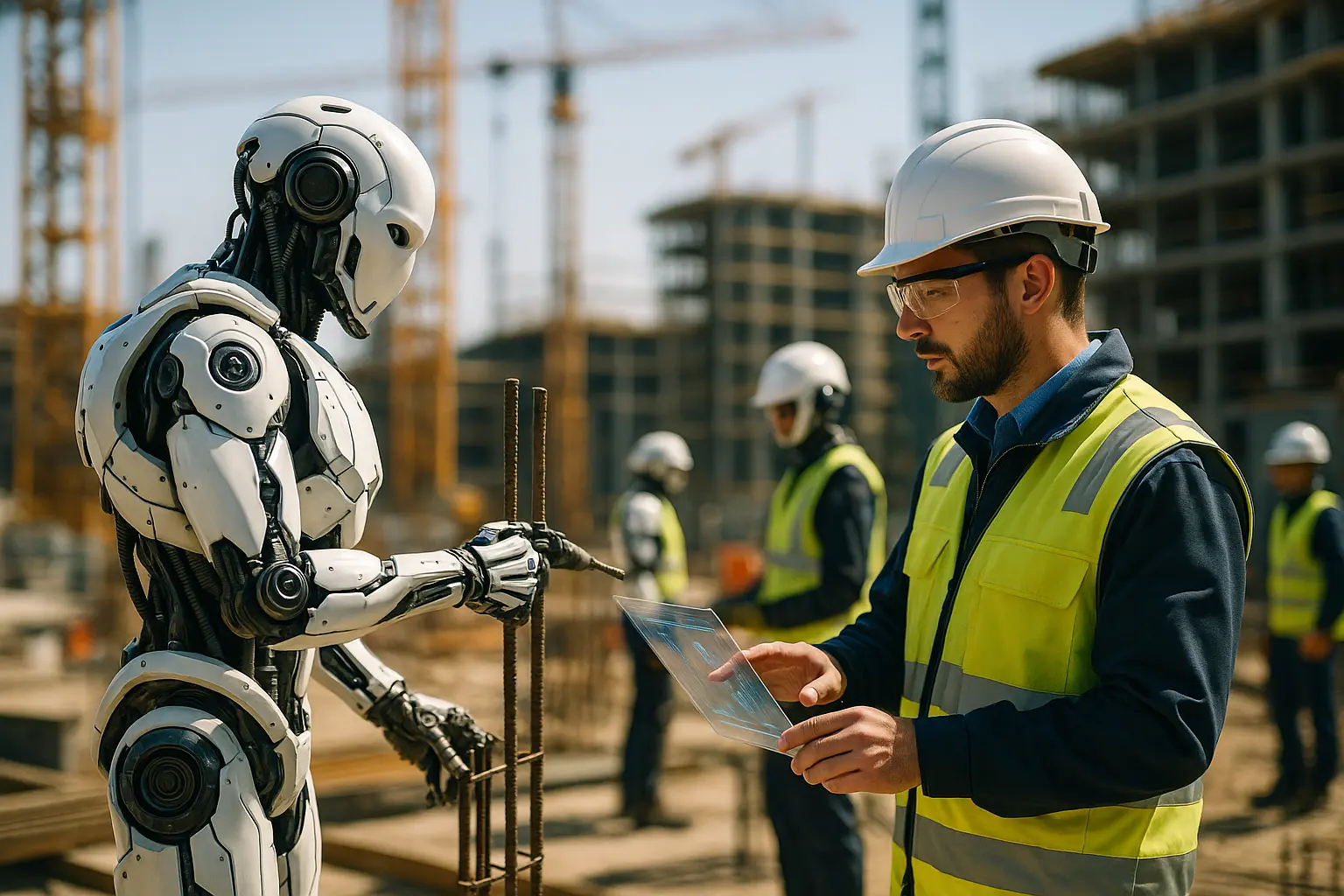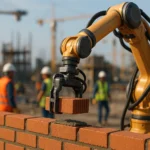Construction is an industry that’s been constantly evolving, and as we stand on the brink of a technological revolution, it’s clear that robotics is set to become the next big thing. In a world where efficiency and innovation are paramount, the integration of robots into construction sites is not just a possibility but an imminent reality. As we delve deeper into this topic, we’ll explore how autonomous machines are transforming the way we build, the benefits they offer, and the hurdles we may face along the way. The future of construction is brimming with potential, and robots are at the forefront of this exciting transformation.
The Rise of Construction Robotics: A Technological Leap
The construction industry has long been known for its reliance on manual labor and traditional methods. However, with the advent of robotics and automation, we are witnessing a paradigm shift. Robots and drones are stepping into roles once reserved for human workers, taking on tasks that are not only physically demanding but also time-consuming and hazardous.
Startups and industry giants alike are investing heavily in this technology, recognizing its potential to streamline operations and increase productivity. These machines are capable of performing tasks such as bricklaying, welding, and even site inspection with precision and speed that surpass human capabilities.
Moreover, robots are adaptable. They can work in various environments, be it high-rise buildings or sprawling construction sites. Their ability to operate independently means they can continue work even in the absence of humans, ensuring continuous progress on projects. This feature becomes particularly valuable in remote or hazardous locations.
With the integration of autonomous technology, construction robots are becoming more intelligent, capable of learning and adapting through artificial intelligence. This advancement not only increases their efficiency but also reduces the margin of error, ensuring that projects are completed to the highest standards.
While the initial investment might be steep, the long-term benefits, such as reduced labor costs and faster project completion times, make the adoption of construction robotics a wise decision for companies looking to stay competitive in the modern age.
Impacts on Human Labor and Workforce Dynamics
As with any significant technological advancement, the rise of robotics in construction raises questions about its impact on the human workforce. Concerns about job displacement are valid, as robots take over tasks traditionally handled by humans. However, this evolution also presents opportunities for the industry and its workers.
Firstly, it’s important to recognize that while robots may take over certain tasks, they also create new jobs. The need for skilled personnel to operate, maintain, and program these machines is on the rise. Training programs and educational pathways are already emerging, aimed at equipping the workforce with the skills necessary to thrive in this new landscape.
Moreover, by alleviating humans from dangerous and repetitive tasks, robots can help enhance worker safety and satisfaction. With robots handling the grunt work, human workers can focus on roles that require creativity, decision-making, and management skills—areas where human intelligence and intuition still outshine machines.
Additionally, the introduction of robotics in construction can bring about improved work-life balance for many workers. As projects become more efficient, there is potential for reduced working hours and less physical strain on human labor, leading to healthier and more productive workers.
In the end, the key is balance. By embracing this shift, we can ensure that humans and robots work collaboratively, each complementing the strengths of the other, and together, paving the way for a more efficient and innovative future.
Materials and Efficiency: The Role of Robotics in Sustainable Construction
One of the most promising aspects of incorporating robotics into construction is the potential for improving sustainability and efficiency. As we strive to create buildings that are both environmentally friendly and resource-efficient, robotic systems offer a significant advantage.
Autonomous robots are adept at optimizing the use of materials. With precise measurements and calculations, they minimize waste, ensuring that every piece of material is used to its fullest potential. This precision not only reduces costs but also lessens the environmental impact of construction projects.
In addition to material efficiency, robots can also help in the implementation of green building practices. For instance, they can support the installation of solar panels and other renewable energy systems with greater accuracy and speed. Their ability to work tirelessly means that projects can be completed faster, reducing the carbon footprint associated with prolonged construction periods.
Furthermore, advancements in robotic technology are leading to innovative construction techniques that are more sustainable. 3D printing, for example, is revolutionizing the way we think about building materials and design. Robots can create complex structures with minimal waste, all while using eco-friendly materials that contribute to a healthier planet.
Incorporating robotics into construction is about more than just efficiency—it’s about creating a future where buildings are smart, sustainable, and beneficial to both people and the planet. As we continue to explore the capabilities of robots, we move closer to achieving a construction industry that is as innovative as it is environmentally conscious.
The integration of robotics into the construction sector is not just a fleeting trend but a transformative movement that is set to redefine how we build. From enhancing efficiency to fostering sustainability, the potential benefits of this technological evolution are immense.
Robots, with their precision and tireless work ethic, are not here to replace us but to collaborate, taking on tasks that elevate the quality and speed of construction projects while ultimately making the industry safer and more sustainable for everyone involved.
As we look to the future, it’s imperative that we embrace these advancements with an open mind and a willingness to adapt. By doing so, we can ensure that the construction industry remains on the cutting edge of innovation, building structures that not only stand the test of time but also contribute positively to our world.
In the end, the future of construction is one of partnership—between humans and machines, between innovation and tradition. It’s a future where we can dream bigger, build smarter, and create a world that reflects the very best of what humanity and technology have to offer.
FAQ
What is the significance of robotics in the construction industry?
Robotics offers numerous benefits to the construction sector, including enhanced precision, increased safety, and improved efficiency. By automating repetitive tasks, robots can reduce human error and lower the risk of on-site accidents.
How are robots being utilized in construction projects today?
Robots are being used for various tasks such as bricklaying, 3D printing of structures, and site inspections. They can also assist in heavy lifting, concrete pouring, and even demolition, ensuring more consistent and rapid project completion.
What challenges do construction companies face when integrating robotics?
Despite their benefits, integrating robotics can be challenging due to the high initial investment costs, the need for specialized training for operators, and potential resistance from the workforce. Additionally, adapting existing workflows to include robotic systems can require significant time and effort.
Are there any current innovations in construction robotics that show promise?
Recent advancements include drones for aerial site surveys, autonomous vehicles for transporting materials, and robotic arms capable of performing intricate tasks like welding and painting. These innovations hold the potential to further revolutionize the construction landscape.
What is the future outlook for robotics in construction?
The future of robotics in construction is promising, with continuous advancements expected to enhance productivity, sustainability, and safety. As technology progresses, robots will likely become integral to construction processes, driving transformative changes across the industry.



